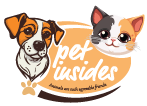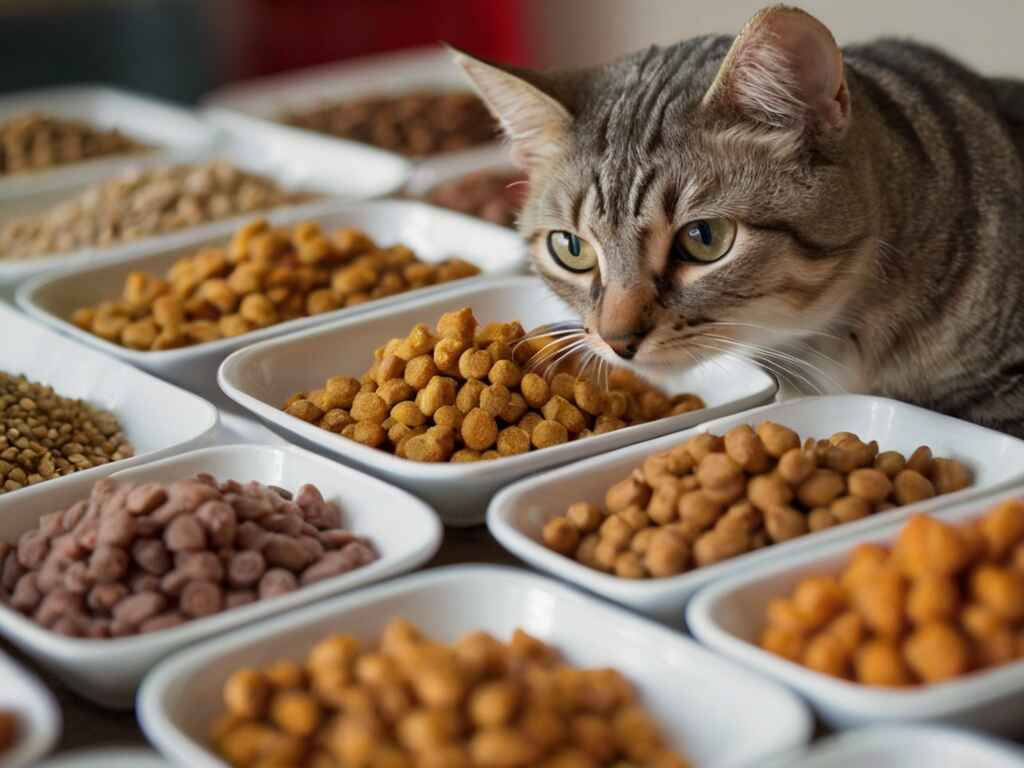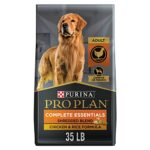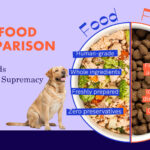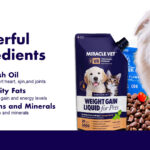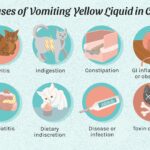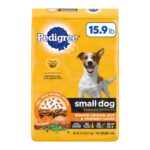The most common food that dogs eat is commercial dog food, such as kibble. Dogs mainly consume a diet specifically formulated for their dietary needs.
Choosing the right food for a dog is crucial to its health and wellbeing, and pet owners today are spoiled for choice. With an array of options, from dry dog food (kibble) to wet canned foods, the market caters to various preferences and nutritional requirements.
Kibble tends to be the most popular due to its convenience, cost-effectiveness, and long shelf-life. Quality dog foods are designed to be complete and balanced, ensuring that dogs get the right mix of protein, fats, carbohydrates, vitamins, and minerals in their diet. It’s essential for dog owners to select a diet that supports their pet’s age, size, and activity level to promote overall health and vitality.
:max_bytes(150000):strip_icc():focal(730x145:732x147)/Super-Bowl-Luxury-Suite-Menu-Revealed-Wagyu-Hot-Dogs-Crab-Legs-and-More-020724-2-97c28a1fcee84eb7aee1f40bc3fb2943.jpg)
Credit: people.com
The Canine Palate
The Canine Palate: Much like humans, dogs have their unique taste preferences and eating habits. Understanding what flavors and textures dogs love can play a role in their overall health and happiness. Let’s dive into the culinary world of our four-legged friends and uncover the most common foods that wag tails and make those puppy eyes gleam with anticipation.
Flavors Dogs Love
Dogs have fewer taste buds than humans, but their sense of taste is still discerning. They generally gravitate towards certain flavors that satiate their cravings.
- Meaty flavors: Dogs go wild for the taste of meat, be it chicken, beef, or pork.
- Savory tastes: Umami, the savory richness found in meats and broths, pleases many dogs.
- Sweet treats: While not a staple in their diet, some dogs enjoy fruits like apples or carrots for their sweetness.
Texture Preferences In Dogs
The texture of food also significantly impacts whether a dog will enjoy eating it. Here’s a snapshot of texture preferences:
| Texture | Preference |
|---|---|
| Crunchy | Dogs appreciate the satisfying crunch of dry kibble or a fresh carrot. |
| Chewy | Chew treats and semi-moist dog foods offer a pleasing resistance. |
| Soft & Moist | Canned food or cooked meat falls into their comfort eating zone. |
Commercial Dog Foods
Commercial dog foods are a popular choice for pet owners worldwide. These foods are specifically designed to meet all of your furry friend’s nutritional needs. Whether it’s dry or wet food, the variety and convenience make commercial foods a go-to option for feeding dogs. Let’s explore the two most common types: dry and wet food.
Dry Food: The Staple Diet
Dry food, often called kibble, is a favorite among dog owners for many reasons. Its long shelf life and ease of storage top the list. But the benefits don’t end there. Kibble helps in cleaning your dog’s teeth as they chew. This aids in reducing plaque and can improve their dental health. Here’s what makes dry food stand out:
- Convenient to serve and store
- Promotes healthy chewing
- Variety in flavors and formulas
- Cost-effective for long-term feeding
It comes in various formulas tailored for different ages, sizes, and dietary needs. Always choose a high-quality brand that lists real meat as the first ingredient for the best nutrition.
Wet Food: A Hydrating Option
Wet food can be a great addition to your dog’s diet, especially if they need more hydration. The higher moisture content in wet food can be a lifesaver for dogs who don’t drink enough water. It’s often richer in protein and has a more appealing taste and smell. This makes it perfect for picky eaters. The benefits include:
- Additional hydration for your dog
- Satisfies picky eaters with enhanced flavor
- Often contains more meat and fewer preservatives
Remember to check the label for quality ingredients and avoid those with excessive fillers or by-products. Combining dry and wet food can give your dog the best of both worlds.
Home-cooked Meals
Home-cooked meals for dogs are gaining popularity among pet owners. Carefully prepared kitchen delights not only provide a personalized touch to your dog’s diet but can also cater to specific nutritional needs.
Balanced Recipes For Dogs
Creating balanced recipes is crucial for your dog’s health. Each meal should contain the right proportions of protein, fats, carbohydrates, and essential vitamins and minerals. Start with high-quality protein sources such as lean meats or fish. Combine these with a variety of vegetables, a small portion of carbohydrates like cooked rice or sweet potatoes, and a sprinkle of healthy fats, for example, flaxseed or fish oil.
- Proteins: Chicken, turkey, lean beef
- Carbohydrates: Rice, quinoa, pumpkin
- Vegetables: Carrots, green beans, peas
- Fats: Coconut oil, olive oil
- Supplements: Bone meal, vitamin mix
Avoiding Toxic Foods
While some human foods are safe, others are harmful to dogs. Items such as chocolate, grapes, onions, and garlic must be avoided to prevent health complications. Be cautious and always refer to a reputable source or consult a vet before incorporating new foods into your dog’s diet.
| Food Type | Safe | Avoid |
|---|---|---|
| Fruits | Apples (no seeds), Bananas, Blueberries | Grapes, Raisins, Avocado |
| Proteins | Cooked lean meats, Cooked eggs | Raw meat, Fatty cuts |
| Veggies | Spinach, Broccoli, Carrots | Onions, Garlic, Chives |
| Miscellaneous | Rice, Cooked pasta, Plain popcorn | Chocolate, Coffee, Alcohol |
Raw Diets Debated
Wondering what’s best for your furry friend’s dinner? The debate over raw diets for dogs is a hot topic. This natural approach mimics canine ancestral feeding habits. But, is raw always the right choice? Let’s chew over the pros and cons.
Benefits Of Raw Feeding
Dogs on raw diets often enjoy these perks:
- Better dental health: Chewing raw meat cleans teeth naturally.
- Shiny coat: Essential fats in raw diets make fur glisten.
- More energy: Wholesome food fuels playful pups.
- Slimmer waistlines: Raw food can help maintain a healthy weight.
- Fewer allergies: Natural diets may reduce allergic reactions.
Potential Risks And Concerns
Raw feeding has its downsides:
| Risk Factor | Details |
|---|---|
| Bacterial infection: | Raw meat can have harmful germs like Salmonella. |
| Choking hazards: | Bones can splinter and cause injury. |
| Nutritional imbalances: | Dogs might miss out on important vitamins. |
| Parasites: | Raw meat may host worms and other parasites. |
| Expensive: | Quality raw diets often cost more. |
Raw diets divide opinions among dog owners. Good research ensures your pup gets their best bowlful. Always consult a vet before switching your dog’s diet.
Treats And Snacks
When thinking about what dogs eat, treats and snacks often come to mind. These little extras can be a great way to reward good behavior, offer a training incentive, or simply show love to your furry friend. Picking the right snacks is crucial to ensure they’re both enjoyable and beneficial for your dog’s health.
Healthy Treat Options
Finding healthy treats for your dog is easy. Look for options that are high in protein and low in fat. Here are some popular choices:
- Vegetables like carrots or green beans make for a crunchy, low-calorie treat.
- Apple slices provide a sweet, juicy snack without the harmful seeds.
- A tablespoon of plain pumpkin aids digestion and adds fiber to their diet.
Always avoid treats with xylitol or chocolate, as these are toxic to dogs.
Overdoing The Goodies
Even when treats are healthy, too many can lead to health problems like obesity. Follow these guidelines:
- Keep treats to less than 10% of your dog’s daily calories.
- Use small pieces–enough for them to taste, not fill up on.
- Consider treat time as part of playtime or training for extra exercise.
Monitor your dog’s weight and adjust treats as necessary with vet advice.
Special Diets And Allergies
Just like humans, dogs have diverse dietary needs. This is especially true for pets with special dietary requirements and allergies. Understanding these needs ensures our furry friends stay healthy and happy. Let’s explore the care needed for dogs with special diets and how to manage food allergies effectively.
Identifying Food Allergies
Dog food allergies can cause discomfort and health issues.
Common signs of allergies include itching, digestive problems, and ear infections. To identify allergies, owners should watch for:
- Excessive scratching or licking
- Hot spots or skin rashes
- Chronic ear infections
- Vomiting or diarrhea after meals
Consulting a veterinarian for accurate diagnosis and a management plan is crucial.
Hypoallergenic Diets For Sensitive Dogs
Hypoallergenic diets are specially formulated for sensitive dogs.
These diets often include:
| Protein Source | Carbohydrate Source | Special Features |
|---|---|---|
| Limited ingredients | Single-source carbohydrates | Free from common allergens |
| Novel proteins | Grain-free options | Supports digestive health |
Dogs with allergies may benefit from novel proteins and carbohydrates they have not been exposed to.
Regular monitoring and adjustments to the diet might be needed based on the dog’s response.
Human Food: A Controversial Topic
Many dog owners ponder whether sharing human food with their furry friends is safe. This topic sparks heated debates among pet lovers. Dogs often beg for a taste of our meals, but not all human foods are suitable for them. Some can even be harmful. Understanding which foods are safe and which are not is crucial for a dog’s health.
Safe Human Foods For Dogs
Several human foods are actually beneficial for dogs when given in moderation. Here’s a list of dog-friendly choices:
- Carrots: Crunchy and good for teeth
- Apples: Vitamins A and C plus fiber, minus seeds
- Chicken: Protein-rich and easy to digest
- Peanut butter: Full of heart-healthy fats, avoid xylitol
- Rice: Plain, cooked, great for upset stomachs
Common Dangerous Foods To Avoid
Certain foods that we enjoy can be toxic to dogs. Ensure your canine companion stays clear of these:
| Food Item | Reason to Avoid |
|---|---|
| Chocolate | Theobromine is dangerous for dogs |
| Grapes | Can cause kidney failure |
| Onions | Damage red blood cells |
| Alcohol | Toxic even in small amounts |
| Xylitol | Found in sugar-free products; causes liver failure |
Feeding Practices Across The Globe
Understanding dogs’ diets around the world sheds light on how various cultures care for man’s best friend. Different locations, traditions, and economic conditions drive diverse feeding practices. From homemade meals to commercial kibble, dogs worldwide follow diverse dietary paths.
Cultural Variations In Dog Feeding
Each culture has its approach to feeding dogs. In some homes, dogs enjoy specially prepared meals. In others, they eat the same foods as their human families. Look at how these practices vary:
- North America: High-quality commercial pet foods dominate.
- Europe: The focus often leans towards natural and organic diets.
- Asia: Dogs may get more table scraps and rice-based diets.
- Africa: Homemade meals featuring locally available ingredients are common.
The Impact Of Location On Dog Diet
Availability of food resources affects what dogs eat. Let’s explore:
| Location | Main Dog Diet Component | Why It’s Popular |
|---|---|---|
| Rural Areas | Table scraps, local meats | Affordability and access |
| Cities | Commercial dog foods | Convenience and variety |
| Islands | Fish and tubers | Local abundance |
In summary, the typical dog diet varies due to cultural habits and what’s available locally. Approach feeding with awareness of your region’s practices.
The Vet’s Advice On Feeding
The foods dogs eat matter much for their health. A vet knows what is best for them. Pets vary in size, breed, and life stage. Each one needs different nutrients. Vets help find the right balance.
Consulting A Professional
Vets are like dietitians for dogs. They have vast knowledge about pet foods. Pet owners should talk to them about their dog’s diet. This could be regular check-ups or specially scheduled consults. Vets provide tailored advice. This ensures dogs get the nutrients they need.
- Assessment: Vets check weight, health, and activity levels.
- Food Choices: They suggest specific brands or homemade diets.
- Portion Control: Advice on how much and how often to feed.
Adjusting Diet For Age And Health
Dogs need different foods as they grow. Puppies, adults, and seniors have unique needs. Health conditions also affect diet. A vet can adjust food choices to match these needs. This keeps dogs healthy at each stage of life.
| Life Stage | Common Needs |
|---|---|
| Puppy | High protein, DHA for brain development |
| Adult | Balanced diet, maintain ideal body weight |
| Senior | Reduced calories, joint support supplements |
Some health conditions require special diets. Dogs with kidney disease may need less protein. Canines with obesity might require low-calorie foods. A vet will pick the best diet. This ensures the dog lives a long, happy life.
Future Trends In Dog Nutrition
As we glance into the future of dog nutrition, exciting changes are unfolding. Owners are seeking ways to enhance their dogs’ health and longevity. This is leading to remarkable advancements and customization in what our canine friends eat.
Innovations In Dog Food
New formulas and ingredients are revolutionizing dog food. Brands now prioritize high-quality proteins and locally-sourced produce. This ensures your pet receives the best nutrition. Notable developments include:
- Grain-free options
- Superfoods enrichment
- Probiotics for gut health
Sustainable practices are also critical. Many brands now offer eco-friendly packaging and responsible ingredient sourcing.
The Rise Of Personalized Dog Diets
Individual health needs are shaping the way we feed our dogs. Personalized diets offer tailored nutrition based on:
- Age
- Breed
- Activity level
- Health conditions
Companies now use algorithms and pet data to create unique meal plans. These plans often include a mix of wet and dry foods, supplements, and even custom treats.
Visual representation using a table
| Life Stage | Dietary Focus |
|---|---|
| Puppy | High Protein, DHA for brain development |
| Adult | Balance of protein, carbs, and fats |
| Senior | Joint support, lower calorie intake |

Credit: nypost.com
Frequently Asked Questions For What Is The Most Common Food That Dogs Eat
What Is The Most Common Dog Food?
The most common dog food is dry kibble due to its convenience and long shelf life.
What Are Dogs Most Favorite Food?
Dogs often favor meat-based foods like chicken, beef, and lamb. They also enjoy various dog-safe fruits and vegetables, such as carrots and apples.
What Do Dogs Mainly Eat?
Dogs primarily eat a diet consisting of commercial dog food, which includes dry kibble, wet food, or a combination of both. They can also consume certain human foods and raw diets under supervision.
What Are The Top 10 Foods That Dogs Can Eat?
Dogs can safely enjoy lean meats, carrots, peanut butter, fish, cooked pumpkin, apples, oatmeal, plain yogurt, brown rice, and peas. Always ensure these foods are prepared without harmful additives.
What Do Dogs Eat Most Often?
Most dogs commonly eat commercial dry or wet dog food formulated to meet their nutritional needs.
Conclusion
Wrapping up, we’ve explored the varied diet of our canine companions. While dog food reigns as the staple, it’s clear that dogs often indulge in treats like cooked meats and vegetables too. Remember, always choose safe, nutritious options for your furry friend’s health and happiness.
